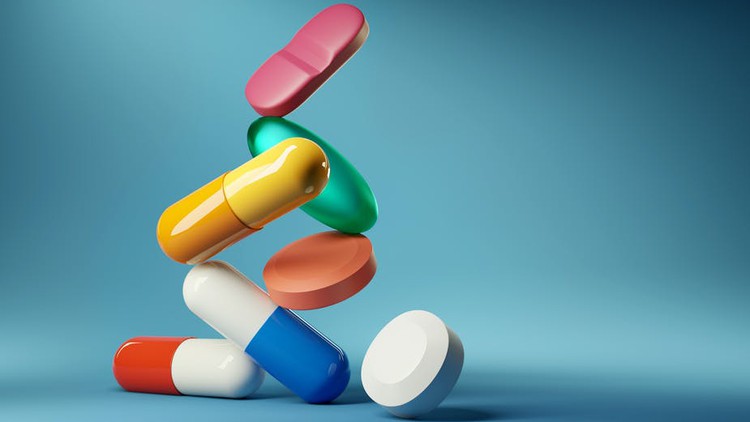
Introduction to Antibiotics
☑ Chemistry
☑ IUPAC name
☑ Detail monograph
☑ Mechanism of drugs
Introduction to antibiotics, nomenclature, classification, B-lactum antibiotics, Non-lactum antibiotics, microlide antibiotics
Antibiotics– Benzyl penicillin*, Phenoxy methyl penicillin*, Benzathine penicillin, Ampicillin*, Cloxacillin, Carbencicillin, Gentamicin, Neomycin, Erythromycin, Tetracycline, Cephalexin, Cephaloridine, Cephalothin, Griseofulvin, Chloramphenicol.
•Antibiotics are medicines that help stop infections caused by bacteria.
• They do this by killing the bacteria or by keeping them from copying themselves or reproducing.
• The word antibiotic means “against life.”
• Any drug that kills germs in your body is technically an antibiotic.
• Antibiotics are the chemical substances derived from or metabolically produced by living organisms, which are capable of inhibiting the life processes of other microorganisms,in small concentration.
• It also includes the synthetic compounds which are structural analogues of naturally occurring antibiotics.
•Antibiotics should only be prescribed to treat health problems: that are not serious but are unlikely to clear up without antibiotics – such as acne.
• Antibiotics fight bacterial infections either by killing bacteria or slowing and suspending its growth.
• They do this by: attacking the wall or coating surrounding bacteria. interfering with bacteria reproduction.
•Thus ampicillin, though not produced by living organisms, is a structural analogue of benzyl penicillin. Hence it is an antibiotic.
Antibiotics– Benzyl penicillin*, Phenoxy methyl penicillin*, Benzathine penicillin, Ampicillin*, Cloxacillin, Carbencicillin, Gentamicin, Neomycin, Erythromycin, Tetracycline, Cephalexin, Cephaloridine, Cephalothin, Griseofulvin, Chloramphenicol.
•Antibiotics are medicines that help stop infections caused by bacteria.
• They do this by killing the bacteria or by keeping them from copying themselves or reproducing.
• The word antibiotic means “against life.”
• Any drug that kills germs in your body is technically an antibiotic.
• Antibiotics are the chemical substances derived from or metabolically produced by living organisms, which are capable of inhibiting the life processes of other microorganisms,in small concentration.
• It also includes the synthetic compounds which are structural analogues of naturally occurring antibiotics.
•Antibiotics should only be prescribed to treat health problems: that are not serious but are unlikely to clear up without antibiotics – such as acne.
• Antibiotics fight bacterial infections either by killing bacteria or slowing and suspending its growth.
• They do this by: attacking the wall or coating surrounding bacteria. interfering with bacteria reproduction.
•Thus ampicillin, though not produced by living organisms, is a structural analogue of benzyl penicillin. Hence it is an antibiotic.
English
Language
Introduction
Introduction to Antibiotics, classification
Introduction to Antibiotics
Introduction to b-lactum antiiotics
Introduction to B-lactum antiboitics
Introduction to non lactum antibiotics
Introduction to microlide antibiotics